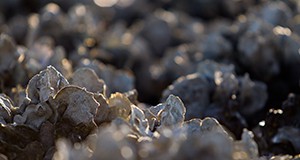Abstract
Oysters are one of the most important natural resources found in coastal and estuarine areas of Florida, but some Florida oyster populations appear to be declining. One possible driver of oyster population decline is increased mortality from oyster predators, including marine snails. But other environmental factors, such as changes in temperature or salinity, may also affect oysters. This 5-page fact sheet written by Gabrielle Love, Shirley Baker, and Edward V. Camp and published by the UF/IFAS School of Forest Resources and Conservation, Program in Fisheries and Aquatic Sciences describes how a changing climate may affect oysters directly but also indirectly by affecting their predators.
https://edis.ifas.ufl.edu/fa228
Unless otherwise specified, articles published in the EDIS journal after January 1, 2024 are licensed under a Creative Commons Attribution-NonCommercial-NoDerivs 4.0 International (CC BY-NC-ND 4.0) license.

